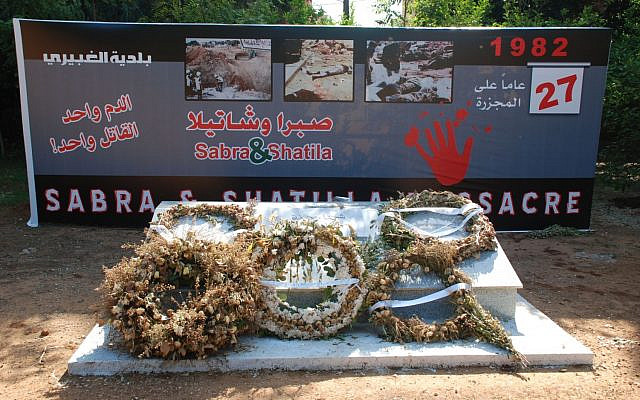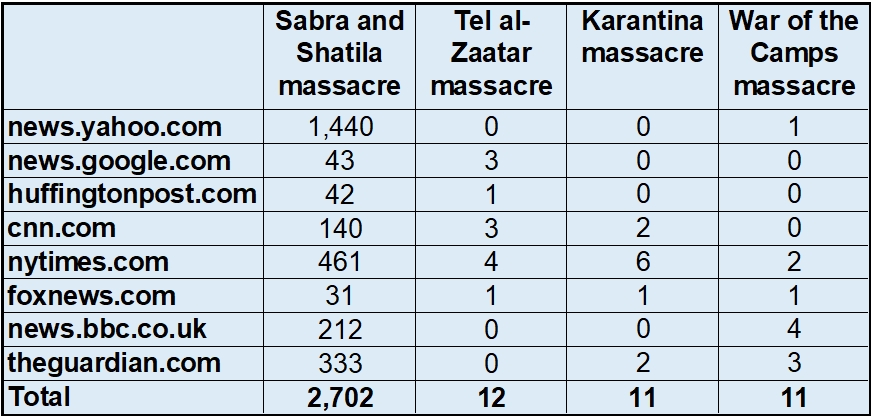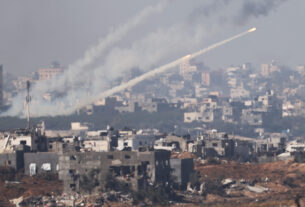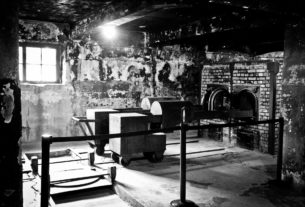Photo Credit: WikiCommons

During the Lebanese civil war, 13 massacres were perpetrated:
- Bus massacre (Beirut) – April 13, 1975, 300 deaths, perpetrated by the Phalange: 27 PLO armed members travelling in a bus in the Ain el Rummaneh area of Beirut planned to murder the Christian Phalangist leader Bashir Gemayel were killed by Christian Phalangists in initial attack, and many more people were killed in subsequent fighting.
- Karantina massacre (Beirut) – January 18, 1976, 300–1,500 deaths, perpetrated by the Phalange: Karantina was a predominantly Muslim slum, and it was overrun by the Lebanese Christian militias.
- Damour massacre (Damour) – January 20, 1976, 684 deaths, perpetrated by the PLO: PLO units attacked a Christian town, purportedly as revenge of the earlier Karantina massacre.
- Tel al-Zaatar massacre (Beirut) – August 12, 1976, 1,500–5,000 deaths, perpetrated by the Phalange: Christian Phalangists and other right-wing Christian militias besieged Tel al-Zaatar, and after heavy fighting, they killed Palestinian civilian refugees and PLO fighters.
- Aishiyeh massacre (Aishiyeh) – October 19-21, 1976, 60–80 deaths, perpetrated by Fatah and As-Sa’iqa.
- Ehden massacre (Ehden) – June 13, 1978, 40 deaths, perpetrated by the Phalange.
- Safra massacre (Safra) – July 7, 1980, 83 deaths, perpetrated by the Phalange.
- Sabra and Shatila massacre (Beirut) – September 16, 1982, 460–3,500 deaths, perpetrated by the Phalange: Sabra and Shatila were Palestinian refugee camps with both Sunni and Christian Palestinian refugees, as well as some poor Lebanese and Kurds.
- Mountain war massacres (South Mount Lebanon) – 1983, 500–1,500 deaths, perpetrated by the Druze forces: Druze forces massacred hundreds of Christian civilians ethnically cleansing South Mount Lebanon from Christian presence.
- US embassy bombing (Beirut) – April 18, 1983, 63 deaths, perpetrated by Islamic Jihad Organization.
- Beirut barracks bombing (Beirut) – October 23, 1983, 307 deaths, perpetrated by Islamic Jihad.
- War of the Camps massacre (Beirut) – May 1985, 3,781 deaths, perpetrated by Amal militia and Syrian Army: Sabra, Shatila and Burj el-Barajneh Palestinian refugee camps were besieged and bombed by the Shi’ite Amal militia, with Syrian Army support.
- October 13 massacre (Beirut) – October 13, 1990, 740–940 deaths, perpetrated by Syrian Armed Forces: Maronite Lebanese soldiers and civilians were killed by Syrian forces after surrender.
Out of these 13 massacres, however, the only one that is still extensively talked about well beyond Lebanon and the Middle East is the Sabra and Shatila massacre of September 16, 1982. Why is that? It is neither the first nor the last massacre. It is not the largest massacre. It is not the only one, nor even the largest one, perpetrated by the Christian Lebanese forces.
‘);
_avp.push({ tagid: article_top_ad_tagid, alias: ‘/’, type: ‘banner’, zid: ThisAdID, pid: 16, onscroll: 0 });
Most interestingly, the 1982 Sabra and Shatila massacre is not even the only or the largest massacre perpetrated against the Sabra and Shatila Palestinian camps during the Lebanese civil war. The largest Sabra and Shatila massacre was perpetrated in 1985 with the active involvement of the Syrian army, but hardly anyone who talks about the 1982 Sabra and Shatila massacre seems to know about the larger Sabra and Shatila massacre of 1985.
Yet, even though the 1982 Sabra and Shatila massacre would hardly stand out in the list of thirteen massacres that took place during the Lebanese civil war, more has been said and written about it, by far, than all the other massacres combined. Thomas Friedman, wrote in The New York Times, ten days after the massacre, that it was “certain to be regarded as one of the most important events in the modern history of the Middle East”, which was a ludicrous prediction considering everything else that has happened in the Middle East, and yet he was right. The BBC called it in 2002, “the worst atrocity of Lebanon’s 15-year civil war and perhaps during the entire Middle East conflict”, which is not even close to true.
Using the Google search engine to find news about the four largest of the thirteen massacres shows hugely disproportionate coverage of the Sabra and Shatila massacre compared to the other three.

Number of results for each of the four largest massacres on eight of the leading English-speaking news sites.
The reason that the 1982 Sabra and Shatila massacre stands out so dramatically is because Israel was involved whereas Israel was nowhere near the other massacres.
At the time of the Sabra and Shatila massacre, Israel occupied West Beirut where the camps were located. As The BBC wrote, “Sabra and Shatila were surrounded by Israeli tanks and soldiers, with checkpoints to monitor the entry or exit of any person. But on the afternoon of 16 September about 150 LF [Lebanese Forces] fighters moved into the camps”. The Lebanese Forces fighters then perpetrated the massacre.
The outrage in Israel was swift and powerful. Israelis demonstrated in the streets and demanded answers. They were outraged that the massacre took place under the watch of the Israeli forces. The outrage resulted in the establishment of the Kahan Commission that investigated the massacre.
The Kahan Commission concluded in February 1983 that “the massacre at Sabra and Shatilla was carried out by a Phalangist unit, acting on its own but its entry was known to Israel. No Israeli was directly responsible for the events which occurred in the camps. But the Commission asserted that Israel had indirect responsibility for the massacre since the IDF held the area, Mr. Begin [Prime Minister] was found responsible for not exercising greater involvement and awareness in the matter of introducing the Phalangists into the camps. Mr. Sharon [Minister of Defense] was found responsible for ignoring the danger of bloodshed and revenge when he approved the entry of the Phalangists into the camps as well as not taking appropriate measures to prevent bloodshed”. The report resulted in the resignation of Ariel Sharon from his position as minister of defense.
According to The Jerusalem Post, some documents declassified in 2012 indicate that “Israeli officials were aware of what the Phalangists might do should they be given access to the refugee camps”. Both the Kahan Commission and later information confirm that Israeli protesters suspected right away, which is that the IDF and Israeli government had a responsibility in the massacre.
Israel has not shied away from assuming responsibility for the massacre. Not only did Sharon resign, but Israelis still remember that massacre. In 2008, Israeli film director Ari Folman who served in the IDF during the Lebanon War, released the documentary “Waltz with Bashir”, for which he won the Golden Globe Award for Best Foreign Language Film.
At the time of the Sabra and Shatila massacre, I lived in Lebanon. I still recall conversations about it, and I still recall feeling deeply ashamed that my own people, the Lebanese Christians, perpetrated the massacre. But today, 37 years after the massacre, I feel a different type of shame.
As a citizen of the world, I am ashamed that very little credit is given to Israel for the way that it reacted to the massacre. I am ashamed that the loss of Arab lives seems to matter to the world only if Israel can be blamed, even indirectly. Mostly, I am ashamed of what this event, like so many others in the history of the Israel-Arab conflict, says about the world’s bias against the only Jewish state. And many other people should be far more ashamed than I am.
‘);
_avp.push({ tagid: article_top_ad_tagid, alias: ‘/’, type: ‘banner’, zid: ThisAdID, pid: 16, onscroll: 10 });



